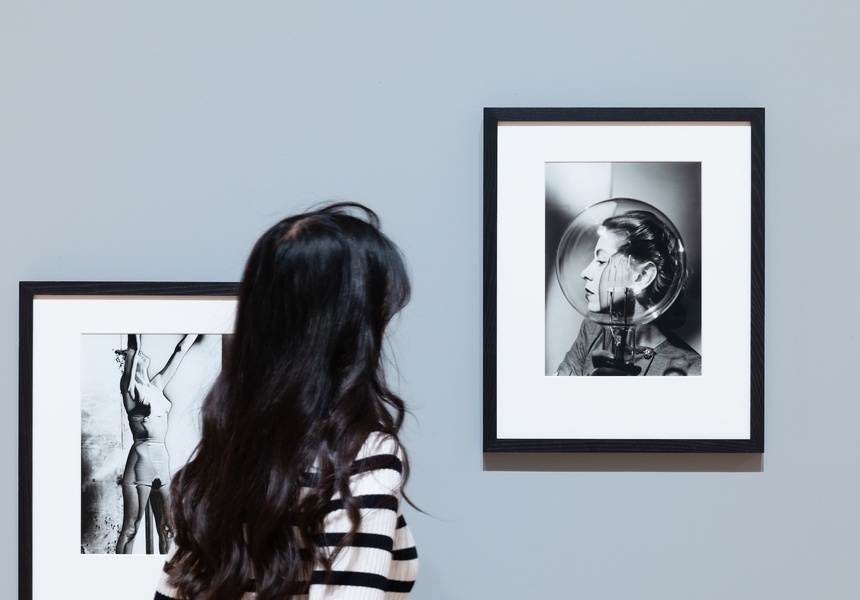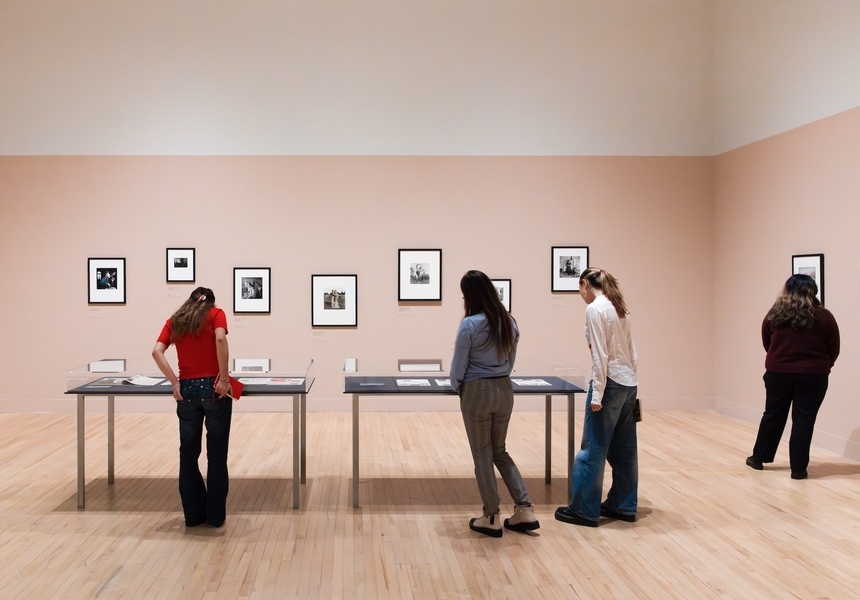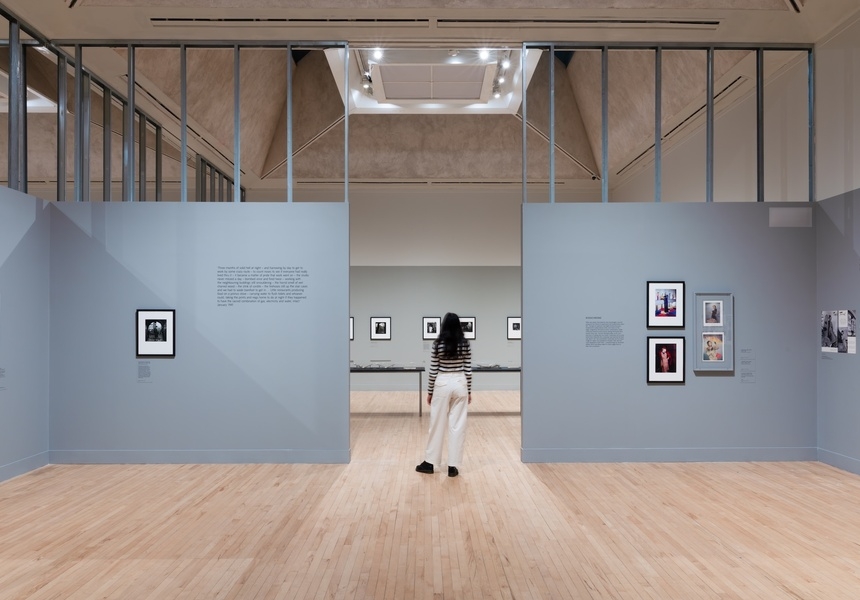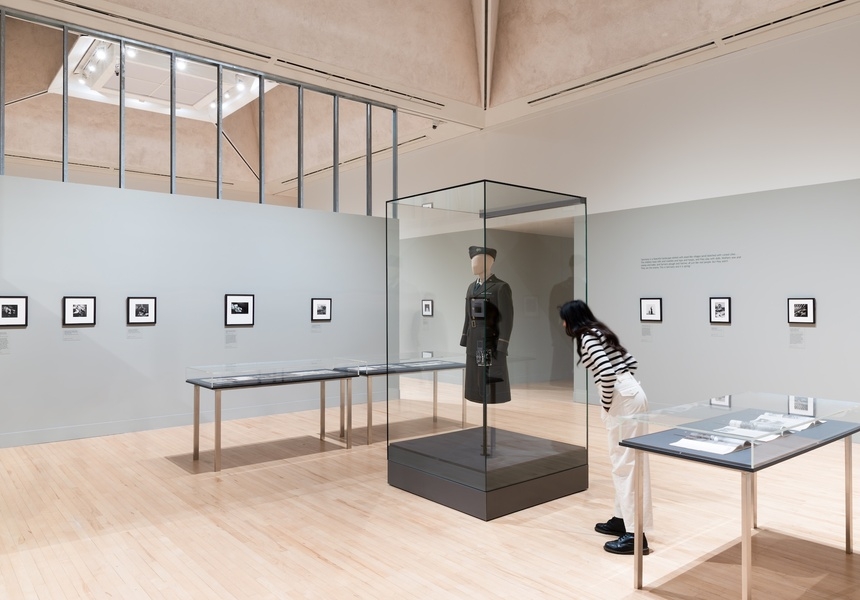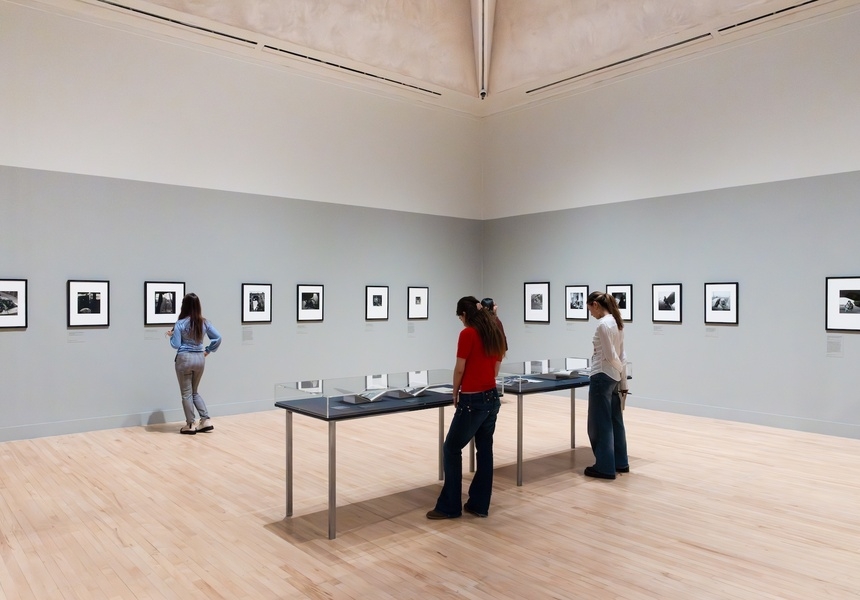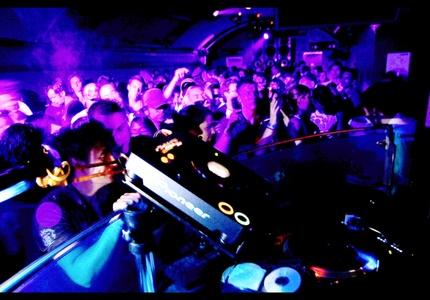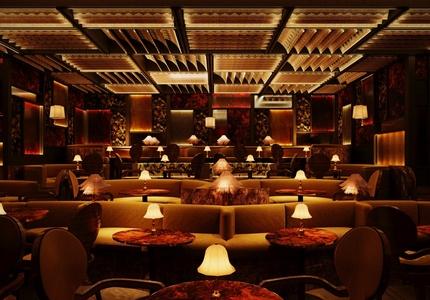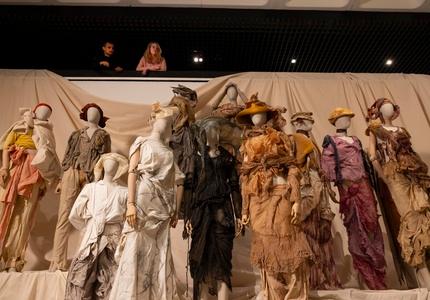When bombs hit Vogue’s Bond Street offices in 1940, the building was reduced to rubble. The September issue still went to press, its cover defiantly declaring: “Here is Vogue! In spite of it all.” Inside were Lee Miller’s photographs of wartime resilience in the city: fashion spreads in blitzed streets, women wearing fire masks in shelters, models draped across sandbags. Though she’d only moved to London the year before, Miller was already making her mark at Vogue – but the war would soon recast her as a chronicler of the century’s darkest days.
Lee Miller at Tate Britain is a new retrospective that puts the model-turned-photographer firmly in the frame. The largest and most comprehensive display of her work ever held in the UK, it brings together more than 230 photographs, magazines, letters and films to trace a career that swung from model to surrealist, from fashion photographer to war correspondent, and finally to cook.
Born in New York in 1907, Miller first appeared on Vogue’s cover in 1927 as a model in pearls and furs – one of the first images you see as you enter the exhibition. Tall, slinky and androgynous, she embodied the new Jazz Age look. To the right is a strip of self-portraits she took in an automated photobooth, playing with angles in a cloche hat, as she began to seize control of her image.
A move to Paris followed when Miller decided she’d “rather take a picture than be one.” Living and working with the surrealist artist Man Ray from 1929 to 1932, she was both his lover and collaborator. Their power dynamic is made clear in a triptych of photographs in which Miller wears a collar while Man Ray, in a plain jumper, exerts control. Together they experimented with solarisation, a technique in which a partially developed print was exposed to light, creating a halo-like effect. Long credited solely to Man Ray, it is here firmly attributed to Miller as well.
By 1934 she had married a wealthy Egyptian businessman and moved to Cairo. The photographs from this period – taken in Egypt, Syria, and Lebanon – shimmer with an otherworldly quality. Most striking is Portrait of Space (1937), a gelatin silver print that shows the Siwa desert framed by a torn tent screen, establishing a veil between the interior and exterior worlds.
But it was London that was the making of Miller. Under Vogue editor Audrey Withers, Miller’s shoots doubled as wartime propaganda, making practical fashion à la mode. Even in the rubble, she found gallows humour, as in a 1940 image of bombed-out Fitzrovia with a police danger sign, captioned “You will not lunch in Charlotte Street today.”
In 1942, Miller became an accredited war correspondent with the US Army. Her khaki uniform hangs in a vitrine beside rarely seen photographs of the war’s aftermath: an opera singer performing in the ruins of Vienna, makeshift surgeries in muddy fields, crumbling buildings, fallen statues. One room is devoted entirely to her famous images from Buchenwald and Dachau, taken just weeks after liberation in 1945. It is a deliberately separate, intimate space, where photography is forbidden out of respect for the sensitivity of the material.
There are harrowing images of striped prisoner trousers, a bloodied SS guard, heaps of abandoned belongings and the corpses Miller felt compelled to document against rumours of genocide denial. Just beyond hangs David Scherman’s landmark photograph of Miller bathing in Hitler’s bath, her boots still caked with Dachau mud on the bathmat. Up close, it stands out as one of the most extraordinary images of the 20th century.
After the war, Miller turned her camera on her circle of friends – Picasso, Miró, Max Ernst, Henry Moore, Dylan Thomas – producing portraits that, while charming, feel overshadowed by the fearlessness of her wartime work. The exhibition ends with these portraits and vitrines of her recipes, reflecting her reinvention as a gourmet cook. Dishes such as cucumber salad à la Cairo and onion upside-down cake suggest a restless creativity that spilled into the kitchen, as she struggled with depression and drink. Her archive, stored away for decades, was only brought to light after her death in 1977 by her son, Antony Penrose.
The Tate Britain retrospective presents Miller as an artist of constant reinvention. She confronted some of the century’s darkest atrocities, yet also recorded moments of beauty and resilience. As Miller once described her life’s work, it’s “getting out on a damn limb and sawing it off behind you”.
Lee Miller runs at Tate Britain from October 2 to February 15, 2026.
